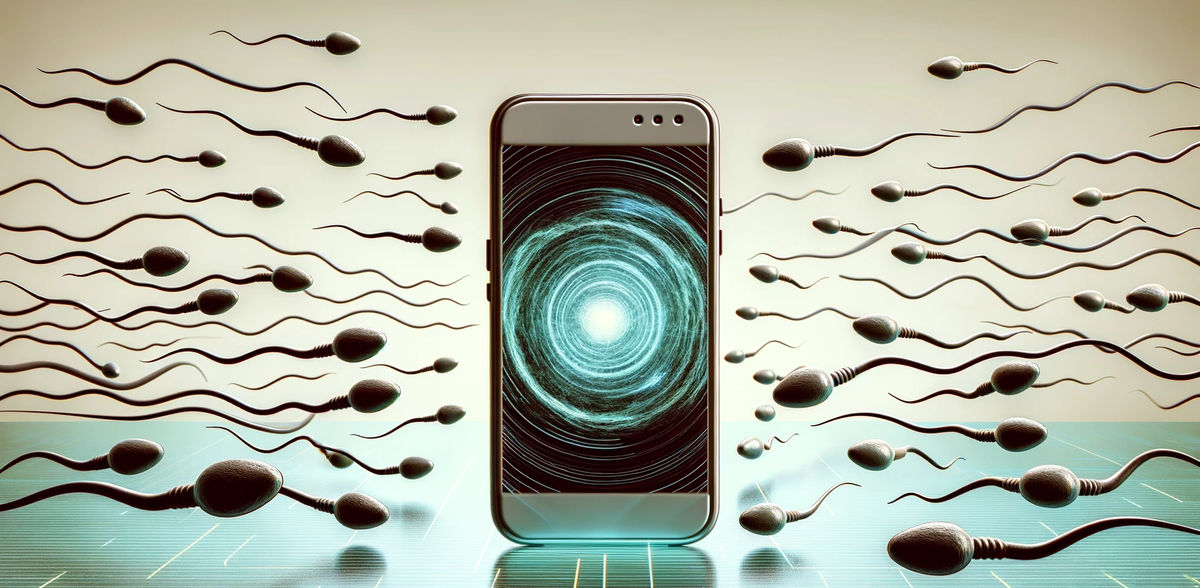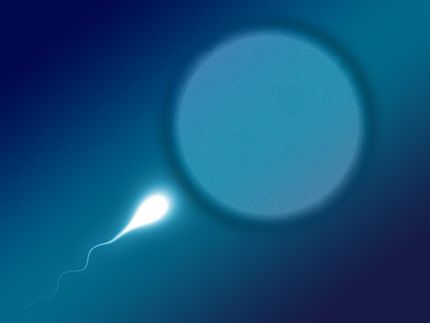Mobile phone use may affect semen quality
Is 4G less harmful than 2G?
Advertisement
How does electromagnetic radiation emitted by mobile phones affect semen quality? A research team from Geneva and Basel has published a major cross-sectional study on the subject. It shows that frequent use of mobile phones does have an effect on sperm concentration and total sperm count.
Semen quality is determined by the assessment of parameters such as sperm concentration, total sperm count, sperm motility and sperm morphology. According to the values established by the World Health Organization (WHO), a man will most probably take more than one year to conceive a child if his sperm concentration is below 15 million per milliliter. In addition, the percentage chance of pregnancy will decrease if the sperm concentration is below 40 million per milliliter.
Many studies have shown that semen quality has decreased over the last fifty years. Sperm count is reported to have dropped from an average of 99 million sperm per millilitre to 47 million per millilitre. This phenomenon is thought to be the result of a combination of environmental factors (endocrine disruptors, pesticides, radiation) and lifestyle habits (diet, alcohol, stress, smoking).
Assessing the impact of mobile phones
Is the mobile phone also to blame? After conducting the first national study (2019) on the semen quality of young men in Switzerland, a team from the University of Geneva (UNIGE) has published the largest cross-sectional study on this topic. It is based on data from 2886 Swiss men aged 18 to 22, recruited between 2005 and 2018 at six military conscription centres. The results have now been published in Fertility & Sterility.
In collaboration with the Swiss Tropical and Public Health Institute (Swiss TPH) and the University of Basel, scientists studied the association between semen parameters of 2886 men and their use of mobile phones. "Men completed a detailed questionnaire related to their lifestyle habits, their general health status and more specifically the frequency at which they use their phones, as well as where they place it when not in use," explains Serge Nef, full professor in the Department of Genetic Medicine and Development at the UNIGE Faculty of Medicine and at the SCAHT – Swiss Centre for Applied HumanToxicology, who co-directed the study.
These data revealed an association between frequent use and lower sperm concentration. The median sperm concentration was significantly higher in the group of men who did not use their phone more than five times a week (56.5 million/mL) compared with men who used their phone more than 20 times a day (44.5 million/mL). This difference corresponds to a 21% decrease in sperm concentration for frequent users (>20 times/day) compared to rare users (1-5 times/week).
Is 4G less harmful than 2G?
This inverse association was found to be more pronounced in the first study period (2005-2007) and gradually decreased with time (2008-2011 and 2012-2018). "This trend corresponds to the transition from 2G to 3G, and then from 3G to 4G, that has led to a reduction in the transmitting power of phones - and thus their electromagnetic radiation," explains Martin Röösli, associate professor at Swiss TPH and the University of Basel.
In addition, with 2G, the cell phone always transmitted at maximum first. "As a result, on average the radiation exposure with 2G is around 100-500 times greater than with 3G," says Röösli. In the years 2005-2007, 2G was still in use to a large extent, in 2018 only marginally.
"Previous studies evaluating the relationship between the use of mobile phones and semen quality were performed on a relatively small number of individuals, rarely considering lifestyle information, and have been subject to selection bias, as they were recruited in fertility clinics. This has led to inconclusive results," explains Rita Rahban, Senior Researcher and Teaching Assistant in the Department of Genetic Medicine and Development in the Faculty of Medicine at the UNIGE and at the SCAHT, first author and co-leader of the study.
Does it matter where you put your phone?
Analysis of the data also seems to show that the position of the phone - for example, in a trouser pocket - was not associated with lower semen parameters. "However, the number of people in this cohort indicating that they did not carry their phone close to their body was too small to draw a really robust conclusion on this specific point," adds Rita Rahban.
This study, like most epidemiologic studies investigating the effects of mobile phone use on semen quality, relied on self-reported data, which is a limitation. By doing so, the frequency of use reported by the individual was assumed to be an accurate estimate of exposure to electromagnetic radiation. To address this limitation, a study funded by the Federal Office for the Environment (FOEN) was launched in 2023. Its aim is to directly and accurately measure exposure to electromagnetic waves, as well as the types of use - calls, web navigation, sending messages - and to assess their impact on male reproductive health and fertility potential. The data will be collected using an application that each future participant will download to their mobile phone. The research team is actively recruiting participants for this study.
The aim is also to better describe the mechanism of action behind these observations. "Do the microwaves emitted by mobile phones have a direct or indirect effect? Do they cause a significant increase in temperature in the testes? Do they affect the hormonal regulation of sperm production? This all remains to be discovered," concludes Rita Rahban.





























































